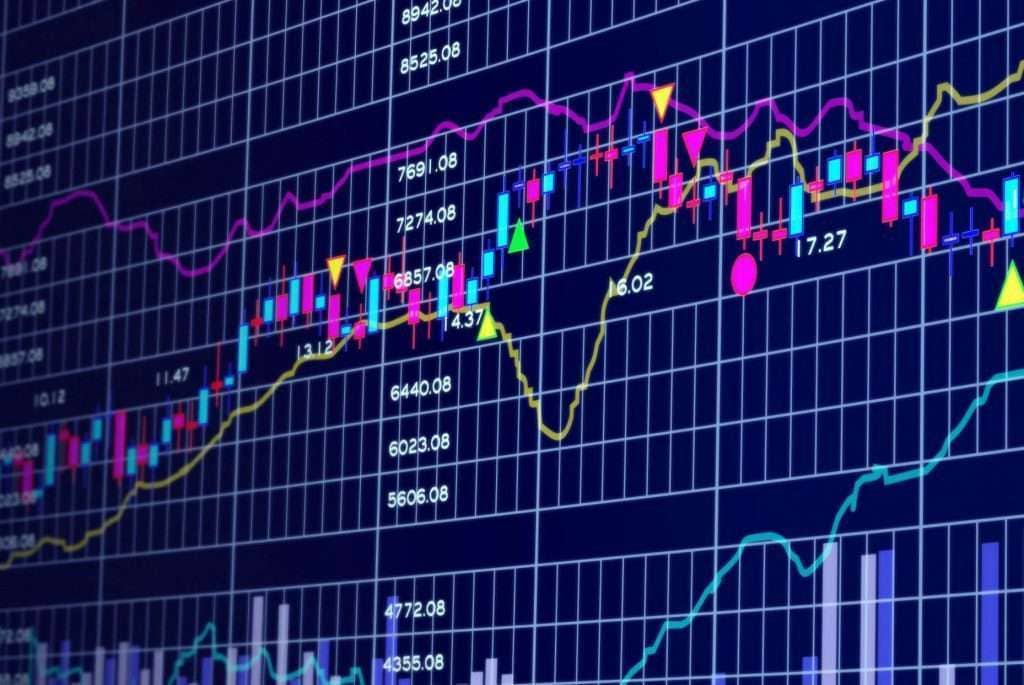Content
The Web Site collects visitors’ contact information (like their mobile number or e-mail address), unique identifiers financial information and demographic information . The visitor’s contact information is also used to get in touch with the visitor when necessary. Financial information that is collected is used to check the users’ qualifications and bill the user for products and services. Unique identifiers are collected from Web Site visitors to verify the user’s identity.
The debate over fundamental and technical analysis is widely contested across the investment industry. Fundamental analysis is often used to make long-term investment decisions, while technical analysis is used to determine short-term trading decisions. Having said this, utilising either would largely depend on the trader’s initial strategy and investment objectives. A significant difference between both is the lifetime of shareholding. The technical analysis turned out to be more beneficial for short-term investments. It has also been observed that fundamental analysis provides indicators more appropriate for long-term investments.
It is important to do your own research and analysis before making any material decisions related to any of the products or services described. This article is not intended as, and shall not be construed as, financial advice. The views and opinions expressed in this article are the author’s [company’s] own and do not necessarily reflect those of CoinMarketCap.
However, fundamental analysis studies the economic and financial aspects that drive a firm. Both have supporters and opponents, just like any other investment technique or philosophy. The technical analyst uses a variety of indicators on share price charts to represent market movement over time.
What are the differences between fundamental analysis vs technical analysis? They’re two schools of thought that investors use to trade in the stock market. It largely depends on your investment objectives, philosophy, and time frame. Studying the financials of a company not only takes time, but for the basics to be reflected in the outcome it is also a long-winded process. With fundamental analysis the goal is to wait for the company to reach its intrinsic worth, which it might take a number of years to attain.
It represents the extent to which price fluctuations in stocks have occurred in the market as a result of the overall pattern. To determine whether to buy, sell, or hold the corporation ‘s stock, you must first determine the firm’s financial and non-financial features. Sales, profitability, and EPS, as well as management, company identity, and customer satisfaction, are assessed for this objective. Value analysts, for instance, believe that the market is mispricing a share in the near term but that the stock’s price will correct itself in the long term.
Candlestick charting is the most commonly used method of showing price movement on a chart. A candlestick is formed from the price action during a single time period for any time frame. Each candlestick on an hourly chart shows the price action for one hour, while each candlestick on a 4-hour chart shows the price action during each 4-hour time period. Price movement that occurs within a 15-minute time span may be very significant for an intra-day trader who is looking for an opportunity to realize a profit from price fluctuations occurring during one trading day. However, that same price movement viewed on a daily or weekly chart may not be particularly significant or indicative for long-term trading purposes. Technical traders believe that current or past price action in the market is the most reliable indicator of future price action.
The difference between FA and TA is pretty simple in crypto:
Fundamental Analysis – what the project, technology, and people behind it should be worth.
Technical Analysis – what the current trends have shown to happen next throughout history.FA – long term
TA – short-mid term— Ethan Luculent (@ethanluculent) June 29, 2021
It’s the business concept, financial statements, competition, management, and many other things. This particular analysis can analyze the economy as a whole to which it belongs, both the firm and the business setting. Fundamental analysis and technical analysis are two primary schools of thought when people approach markets.
Founded in 1982, Pantheon is a leading global private equity fund investor, managing private equity funds and separate account programs for investors around the world. The firm’s long-term presence in Europe, the U.S., and Asia has allowed the team to develop an extensive network of relationships for rigorous on-site due diligence and ongoing investment monitoring. Analysis, and how technical and fundamental analysis can be used together.
Market sentiment and the effect of emotion on market activity can only be analyzed by using price and volume data. On the other hand, charts cannot be used to determine whether a stock is under or overvalued and what its value may be years into the future. Charts reflect what has happened in the past, and their value diminishes the longer the time horizon. Generally, fundamental analysis takes a long-term approach to investing compared to the short-term approach taken by technical analysis. While stock charts can be shown in weeks, days, or even minutes, fundamental analysis often looks at data over multiple quarters or years.
Today, tensions between Russia and Ukraine led to global uncertainty and kept the markets on their toes. We’ll take a look at the more advanced forex tools also such as pivot points, divergences, Heikin Ashi, Elliott Wave Theory, and harmonic price patterns. At the end of the day, you should trade based on the type of analysis you are most comfortable and profitable with. Throughout your journey as an aspiring trader, you will find strong advocates for each type of analysis.

It is hard to draw the line between fundamental analysis and market sentiment analysis, but you’ll get there with deliberate practice. Fundamental factors shape sentiment, while technical analysis helps us visualize that sentiment and apply a framework to create our trade plans. And as you’ll find out in later lessons, identifying trends is a huge part of technical analysis. It is also important to note that financial markets are irrational due to investors psychology and emotions. When a security is significantly oversold and initiating the position too early could be detrimental, this pairing may perform best.
Fundamental analysis is used for long-term investments, while technical analysis is used for short-term investments. Fundamental analysis considers both previous and current data, whereas technical analysis considers only past data. The time difference between the two analysis is not only experienced in their approach but in their objective too, wherein the technical analysis is concerned with trading, https://xcritical.com/ fundamental analysis talks about investment. As most of the investors use fundamental analysis to buy or hold stocks of the company, whereas traders rely on the technical analysis, to make short term profits. Technical analysisdiffers from fundamental analysis, in that traders attempt to identify opportunities by looking at statistical trends, such as movements in a stock’s price and volume.

Technical analysis gives the impression of being very factual and empirical. Therefore, it is easy to claim that acting in accordance with a specific pattern or technical indicator is guaranteed to yield profit. In your own words evaluate the differences between cooperative and competitive strategies. Compare and contrast vision statements with mission statements in terms of composition and importance. There are several methods for evaluating and comparing long-term projects using different approaches. These techniques are the payback method, the net present value, and the internal rate of return.
Frontier Capital Management Company, LLC specializes in growth and value equity investments on behalf of institutional and individual clients. Separately Managed AccountsAMG Funds provides access to a wide array of separate account strategies fundamental and technical Analysis managed by a number of Affiliated Managers Group’s boutique investment managers. The Web Site’s online surveys ask visitors for contact information (like their mobile number or e-mail address) and demographic information .
People who just look at price charts are called technical analysts. They argue that everything you need to know about a particular asset, be it a share, forex pair or commodity, is already being reflected in the price. Technical analysts plan their trades and investments based on price trends, chart patterns such as head and shoulders, and more mathematical chart indicators such as moving averages. Did you know that early signs of technical analysisappeared long ago in Dutch financial marketsin the seventeenth century? You should know that math and patterns usually drive technical analysis. Analysts forecast future stock market prices using various past share performance statistics.

But this does not necessarily mean that this is a good time to invest or start trading as a latecomer. When it comes to market analysis and forecasting future market trends, there are two major schools of thought, namely technical analysis and fundamental analysis . Technical analysis is built on the belief that past price movements and market activity of a given asset can be used as a valuable source of information to determine the future price trajectory of that asset. “Efficient Market Hypothesis ” is a theory that states that stock prices are determined based on current data and current information about the stock price rather than the past performance of the data. Thus the current stock price is an accurate reflection of the value of the stock.
The market trades between well-known levels dubbed support and resistance. When the market makes a sharp move and breaks above the resistance or below the support, the movement would be classified as a breakout. This is really a relative question because it depends on the individual and each one of us learns differently, however invariably learning to trade will require substantial time, solid commitment and focus. Learning to trade also depends on a number of variables some of which are outside our control.
The reality is that both technical analysis and fundamental analysis are important and can be used together when formulating a trading strategy. Momentum and sentiment matter far more over brief periods than fundamental factors like valuation. However, this isn’t the same as saying that fundamental factors can be disregarded entirely. Technical analysis and charting is actually interesting as theoretically the graph should depict the underlying fundamentals, they are intrinsically linked; as market price tends to lead the known fundamentals. Efficient Market Hypothesis however disregards the past, as it states that all past information is already priced in to the stock. Under, fundamental analysis, analysts try to determine the true value of the stock by studying the financial data of the company.